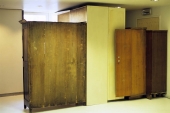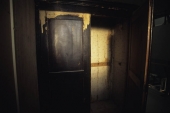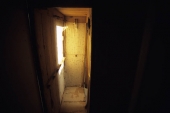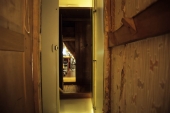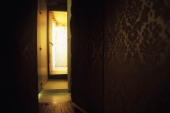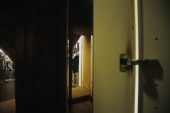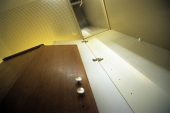2009
Lloyd hotel, Amsterdam, NL
H 2,3m W 2,4m L 3,6m
second-hand closets, wood, metal, textile, foam, mirrors, lamp
A group of four closets stands bunched up, enclosing the far right corner of the exposition space, with their back or sides to the viewer. Walking around, there is an entrance from the backside. Stepping inside of the closet, the public enters a passage leading from one cabinet to the next. The spaces inside are narrow, the movement route is determined by the open/closed cabinet doors. Mirrors on the inside of the doors create illusions of continuation and repetition of spaces and elements. The light falls in through cracks and gaps between the closets.
The passage splits up. Following left, it steers to the corner of the room. The corner surrounded by the closets acts as a breathing space in the installation. Here, the path finishes in a tall cabinet with a mirror on the ceiling that reflects the street image of the unseen window behind the closet.
Following straight ahead, the hallway leads to a small closet lined inside with textile. One can sit in it, there is a lamp. The back wall, from the same textile as the rest, turns out to be a curtain. It discloses a hidden space behind it: a crowded small office.
